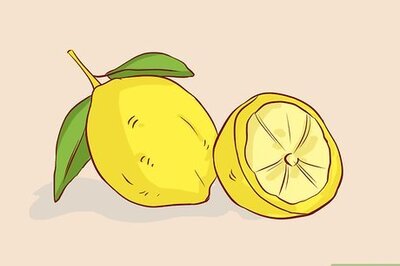
views
New Delhi: Food inflation fell to 8.53 per cent for the week ended on April 23 on the back of fall in prices of pulses, reversing the upward trend seen in the previous fortnight.
Food inflation in the previous week was 8.76 per cent. The latest numbers are likely to come as a relief to the government and the RBI, especially at a time when the central bank's monetary policy for the fiscal, released earlier this week, was almost exclusively focused on fighting price rise.
Food inflation stood at 20.91 per cent during the corresponding week last year.
During the week under review, wholesale prices of pulses declined by 7.39 per cent on a year-on-year basis. However, all other commodities witnessed a rise in prices.
Cereals became dearer by 4.42 per cent year-on-year, with rice and wheat becoming more expensive by 2.08 per cent and 0.06 per cent, respectively.
Vegetables prices were overall up by 3.44 per cent. Potatoes became dearer by 0.27 per cent on an annual basis and onions were up by 16.09 per cent.
Fruits and protein-based items continued to become more costly. Fruits became dearer by 32.69 per cent year-on-year, while milk was up by 5.16 per cent and eggs, meat and fish by 5.13 per cent.
The rate of price rise of non-food primary articles was 27.84 per cent. Fibres became more expensive by 85.58 per cent year-on-year, while fuel and power was up by 13.53 per cent and petrol by 21.81 per cent.
The high rate of price rise of food items was one of the reasons for inflationary pressure last fiscal. However, the government had exuded confidence that food inflation would moderate in the months to come on account of the record crop of wheat and pulses during the 2010-11 crop year (July-June).
Headline inflation was 8.98 per cent in March and has been above the 8 per cent mark since January, 2010.
In its monetary policy report released earlier this week, the RBI said inflationary pressure would remain a concern during the first fiscal, with core inflation (which does not take into account the rise in food prices) heating up on account of spiralling oil and commodity prices in the international market.
The RBI said inflation would remain at an average of 9 per cent during the first half of 2011-12, before falling to around 6 per cent by March, 2012.


















Comments
0 comment